There’s science behind your inexplicably close relationship with your cat
Cats and their human devotees are a misunderstood bunch. This I learned when I wrote “Why cats never became man’s best friend” explaining how the newly mapped cat genome reveals that, compared with dogs, house cats are only partly domesticated. The backlash on Quartz’s Facebook page was epic. The post received nearly 1,700 comments—more than any other post on Quartz’s Facebook page, ever. What prompted this outpouring? I referenced the cat stereotype commonly traded among dog people that cats are passive-aggressive and emotionally unavailable.


Cats and their human devotees are a misunderstood bunch. This I learned when I wrote “Why cats never became man’s best friend” explaining how the newly mapped cat genome reveals that, compared with dogs, house cats are only partly domesticated. The backlash on Quartz’s Facebook page was epic. The post received nearly 1,700 comments—more than any other post on Quartz’s Facebook page, ever. What prompted this outpouring? I referenced the cat stereotype commonly traded among dog people that cats are passive-aggressive and emotionally unavailable.


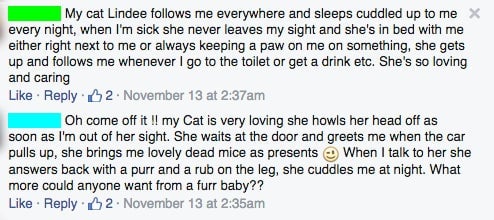

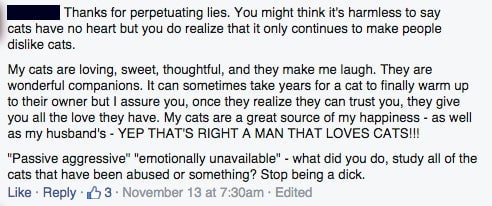

On the face of it, dog people seem to be less touchy. Our article last year on dogs’ genetic wildness (“Stop coddling your dog—he’s 99.9% wolf”) was widely read, but it sparked hardly any response from dog people at all—and certainly no outrage.
So why do cat people come off as so darned sensitive? Maybe because they are. Studies do indeed show cat people tending toward greater nervousness and moodiness than the pro-canine crew. Recent research also suggests pet owners with more neurotic traits are also inclined to feel more anxiety about their pets’ feelings toward them. Whether consciously or not, both media and society seem to love to rub this insecurity in.
Yet many in the pro-cat camp argue that the bond they share with their cats is superior to what dog people experience with their pets:



Sounds pretty bitter, maybe. But on this point, at least, the cat people are not as crazy as the stereotype maintains. Their pet of choice has largely resisted the human meddling that has somehow hewn chihuahuas and whippets from the genes of wolves—meaning: cats just aren’t programmed to please people the way dogs are. And this may explain why cat people seem to have an incredibly deep bond with their pets.
How cats domesticated themselves
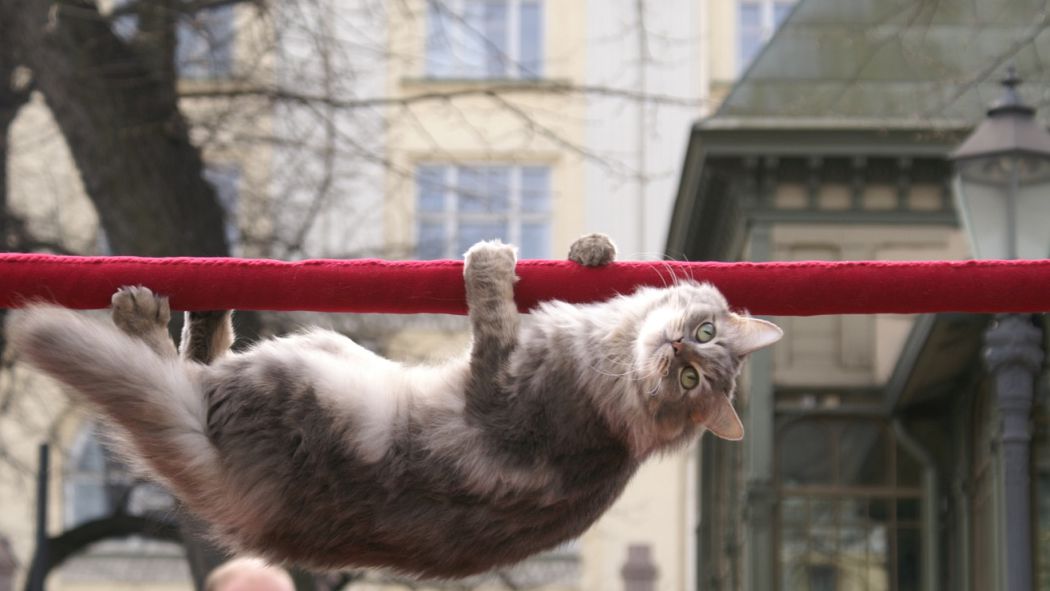
Compared to dogs, house cats still have much more in common genetically with their wild cousins—something the recent mapping of the cat genome (paywall) highlighted. It’s the differences between kitties and wild cats, however, that illuminate a lot about the history of human-cat relations.
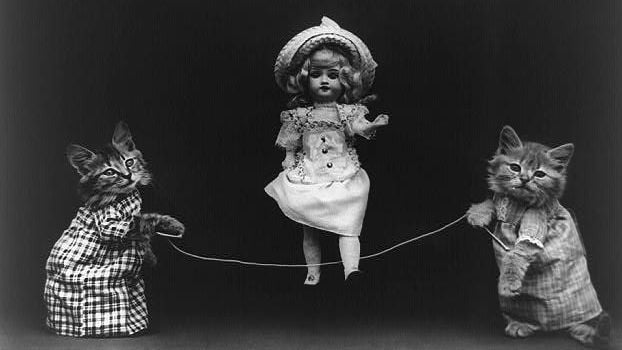
Among the biggest divergences involve genes that influence reward-seeking behavior and response to fear. About 9,000 years ago when grain agriculture began spreading throughout the Fertile Crescent, scientists think wild cats began encountering people more often as they hunted the rodent populations that swarmed granaries during harvests. Farmers likely responded by rewarding those cats that stuck around with food scraps. The offspring of those whose genes allowed them to tolerate the presence of humans are the ancestors of modern-day house cats.
Communication, too, is something that cats most likely adapted as they developed the need to avoid fighting with other cats, as well as to win protection of humans—a process that “extended cats’ social repertoire,” wrote John Bradshaw, a professor at the University of Bristol and the author of Cat Sense, in a 2013 Washington Post article.

“Domestication” refers to the changing of an animal’s genetic makeup through selective breeding to enhance traits and behaviors that appeal to humans. House cats have been domesticated, but it’s little thanks to selective breeding by humans (pure breeding began only 200 years ago). Only a tiny fraction of cats mate with partners that humans choose for them, as recent research highlights, and uncontrolled breeding of feral and free-roaming cats generates most of the house cat population.
“In contrast to almost every other domestic animal, cats retain remarkable control over their own lives. Most go where they please and when they please and, crucially, choose their own mates,” wrote Bradshaw in the Post. ”Unlike dogs, only a small minority of cats has ever been intentionally bred by people.”
Because house cats continue to mate with wild populations, their hunting abilities have stayed largely intact. This is a big part of why today’s house cats still retain the wild cat genes that make them formidable predators—retaining night vision, for example, or the broadest range of hearing among carnivores. Unlike most dogs, they haven’t evolved in ways that make them more dependent on humans for food.
In pop culture, dogs are heroes, cats are zeroes
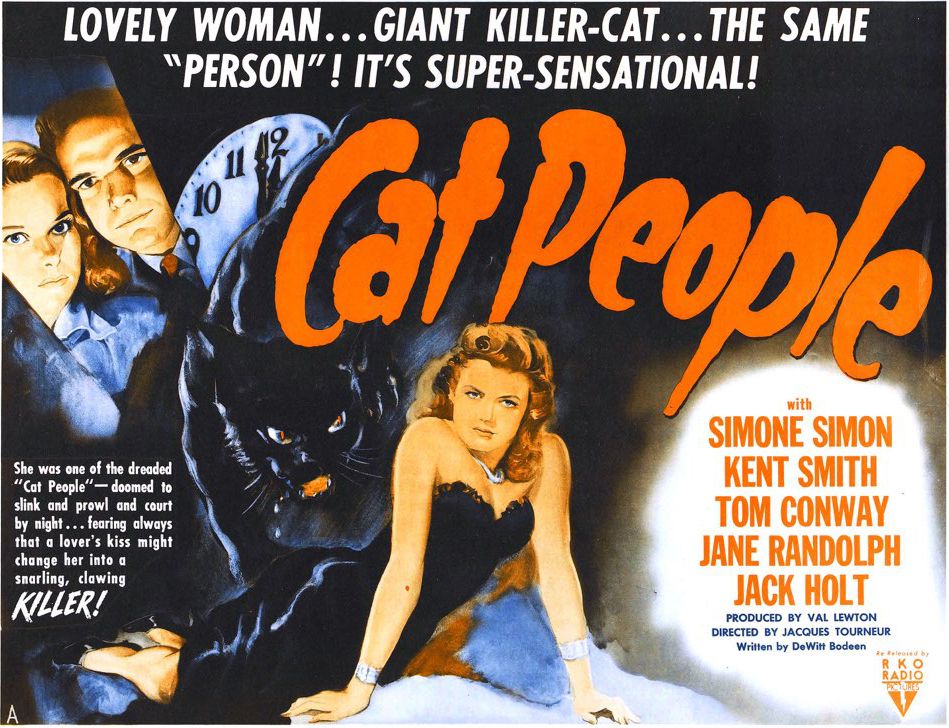
Aversion to cats’ lingering wildness might have something to do with how they’re typically portrayed. One of the biggest points of antagonism for cat people is a dog-cat rivalry that the media and popular culture stoke—and the fact that it almost always favors dogs. Compare Lassie, Toto, Air Bud, Benji, and Max, with Garfield, the Cheshire Cat, Mr. Bigglesworth, Azreal, Lucifer, Tom, Si and Am.
Dogs are heroes, trusty sidekicks—at worst, pesky but lovable rascals like the eponymous pup of Marley & Me. Villains and their companions of choice? Cats, by a mile.
You’d think these cliches might get tired. Yet the media relentlessly breathes new life into these conventions (myself included: dogs, as my previous headline alluded, are “man’s best friend,” cats “man’s best frenemy”). Dogs are loyal, affectionate, friendly, and playful, according to the common wisdom. In fact, a recent study (paywall) found that news stories about dogs tend to be picked up more frequently than non-dog-related stories.
Examine cat coverage and it becomes apparent that the media openly exploits the dog-cat rivalry, often portraying them as aloof at best—and at worst, cold, calculating, manipulative, bloodthirsty, toxic, and incapable of love. Sometimes all of the above.
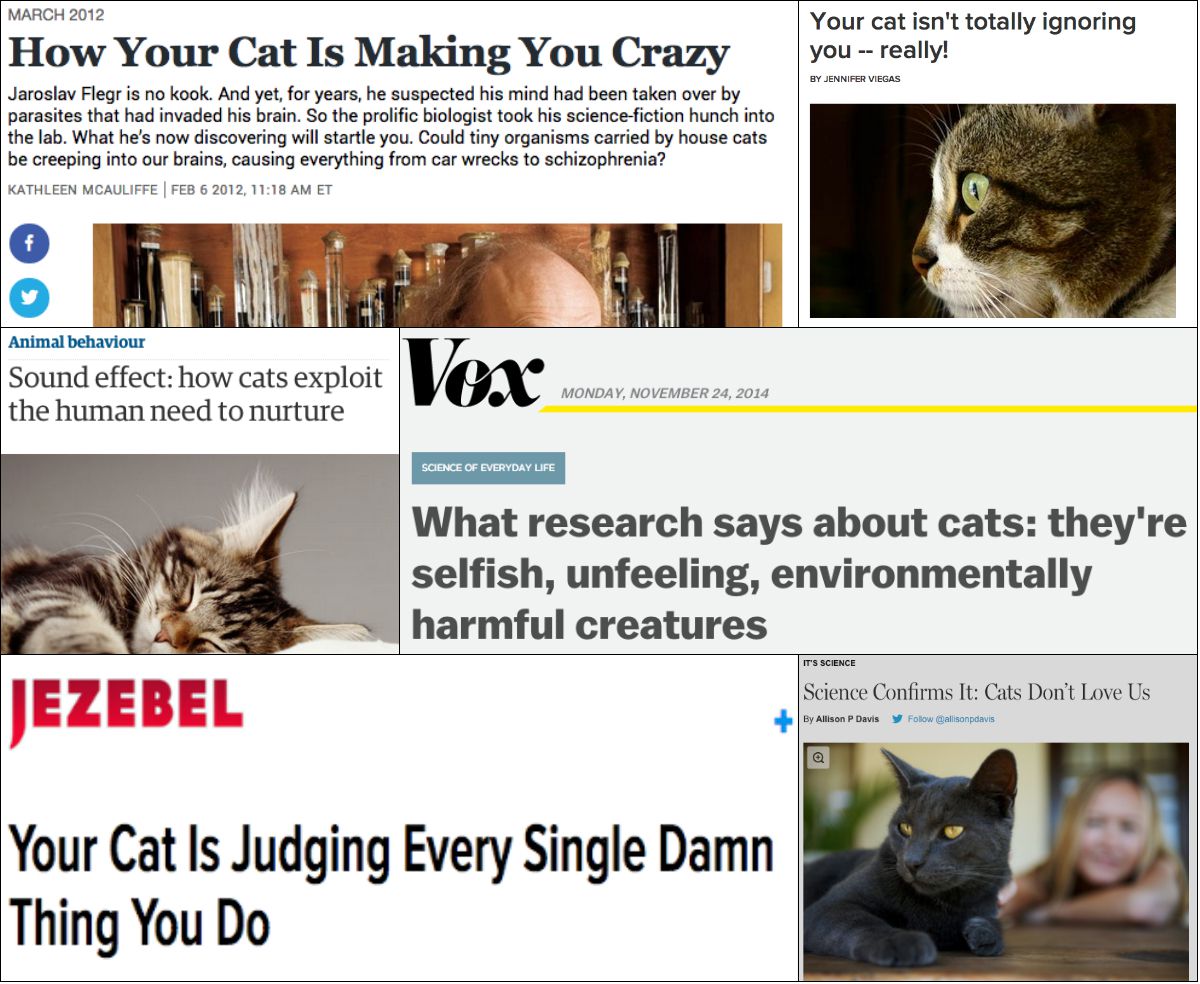
Meowing martyrs
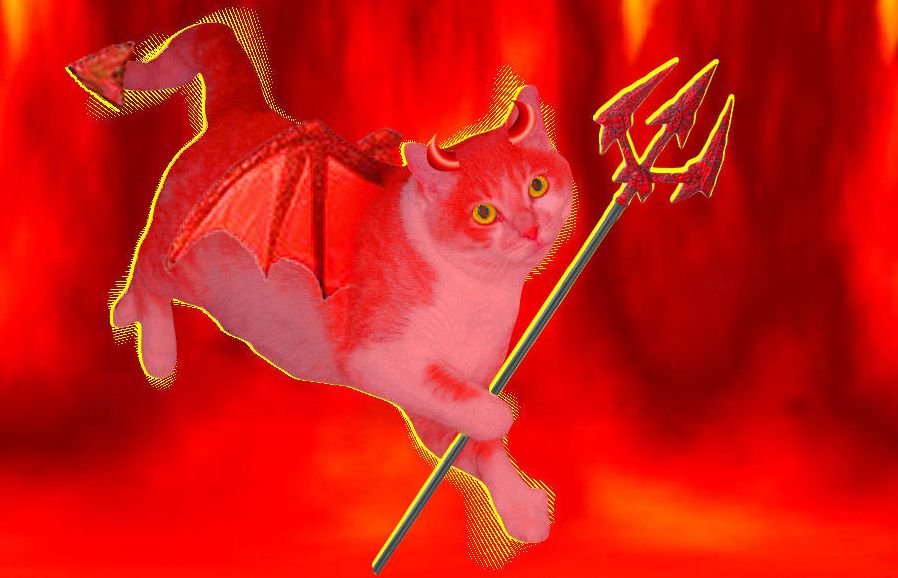
This hating on cats thing—it isn’t all that original. The conceit’s true pioneer was Pope Gregory IX, who declared in 1233 that during Satanic masses, the Devil took the form of a black cat.
All over Europe, the Catholic Church tortured and executed cat owners for witchery. Since having cats could get you burned at the stake, people began slaughtering domestic cats—a trend worsened by the misconception that cats caused the Black Death, which began ravaging the continent in the mid-1300s. Europe’s entire domestic cat population was very nearly wiped out, and many tens of thousands of “witches” were burned at the stake over the next 400 years.
It wasn’t just Catholics who had it in for cats, though; Queen Elizabeth I’s coronation festivities included burning a cat alive (so festive!). To this day, cats endure torture and persecution that just doesn’t seem to happen to dogs. For instance, people might say this about specific dog breeds—pit bulls or poodles, say—but not about dogs in general:

Dogs, the people-pleasers
Against that backdrop, it’s not really all that surprising that cat people might be sick of fighting the prevailing wisdom that dogs are more generous of spirit than cats. And, scientifically speaking, this bias is unfair. Recall that dog genes have been shuffled around for millennia to suit human needs. While people throughout the ages were burning and brutalizing cats, dogs were by their sides fetching ducks, chasing foxes, and killing Attila the Hun’s enemies, to name a few of the skills they were bred for.
This brings us back to the evolution issue. Again, house cats are mainly a product of natural, and not artificial, selection—they domesticated themselves, you might say.
Dogs, not so much. Starting between 11,000 and 16,000 years ago, when dogs were first domesticated from ancient wolves, they’ve been bred to please people. The ease with which humans can breed them also means that humans have selected for genes that make dogs more appealing to them—and not just for skills, but also for aesthetics and personality.
That lack of mystery might have something to do with why Hollywood, the media and the general populace is more inclined to relate to dogs than cats, notes Mikel Delgado, a scientist at the University of California, Berkeley and a professional cat behavior consultant.
“I think part of the [media bias] is because cats are less transparent to us—they appear to have less facial expression,” she says. Dogs, by comparison, are thought to act on their whims and readily reflect what seem to humans to be familiar emotions. But dogs have probably been bred for these traits, says Delgado. “They were fed because they could wrinkle their eyebrows, and we bred them further to mirror our own expressions,” she says.
A bond of mutual respect
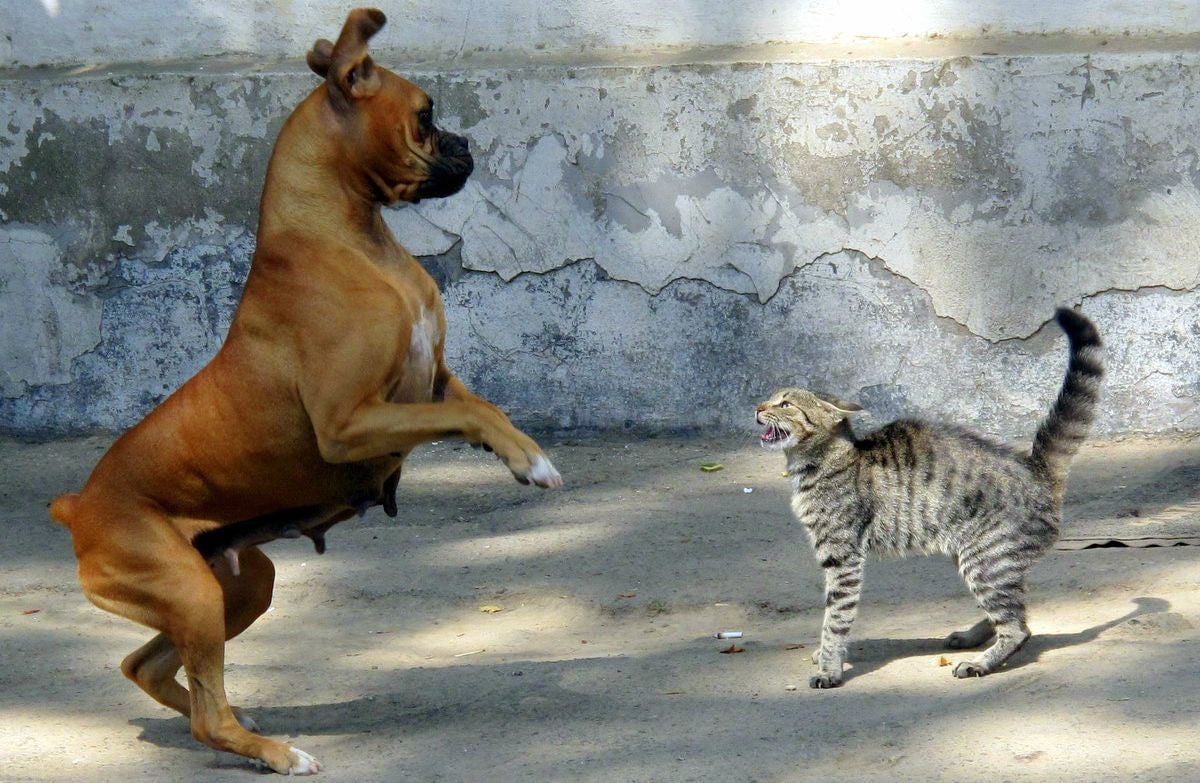
This goes for communication, too. Thanks to many millennia’s worth of dog gene-tweaking, humans have set the standard for what behaviors convey pet affection. In fact, dogs now automatically treat humans differently from how they treat other dogs, notes Bradshaw in this National Geographic interview.
Genetically speaking, though, cats come out of the box less programmed to socialize with humans than dogs do. In fact, they treat humans much as they treat other cats, says Bradshaw.
Scientists don’t know for sure what behavior indicates affection for humans. But since cats haven’t been bred en masse to please, each is different enough from the next that the repertoire of physical and vocal communication they use to express affection also isn’t standard. Cats also tend to be much less reliant on people than dogs are. They are good at taking care of themselves—e.g. hunting and cleaning themselves—and will reject abusive owners.
Mutual dependency is therefore more balanced than it is with dog ownership; pet and pet owner both have to work to understand each other, negotiating emotional and physical needs in a similar way to how human friends do, says Bradshaw. Being totally different animals—ones with conflicting views on things like, say, ideal time of day to sleep, definitions of cleanliness, or the recreational value of a W2 form—makes that process much less straightforward. But it means that when cats give and receive affection, it’s not necessarily in exchange for food or because their DNA is hardwired to do so. It’s probably because, like humans, they feel inspired to express it.
Cat people: more neurotic than dog people?
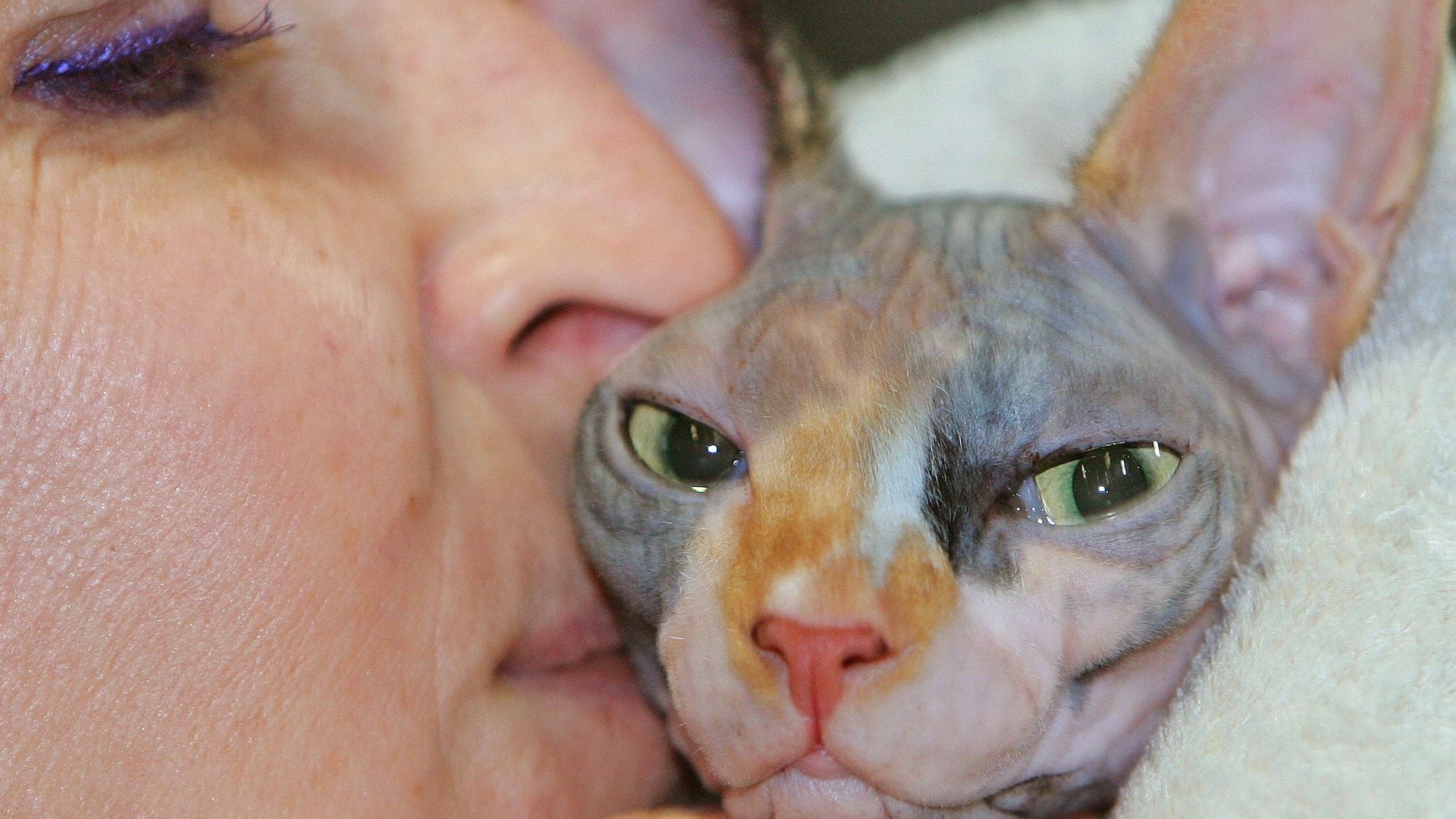
It should come as no surprise that just as cats and dogs differ so too do the people who identify as their owners. A now renowned 2010 study by University of Texas psychologist Samuel Gosling and colleagues examined personality traits of people who label themselves “dog people” and “cat people,” among survey respondents in North America, the UK, Australia and other countries. They found that cat-lovers tended to be less cooperative, compassionate, and outgoing than those who dig dogs, and tended toward more anxiety and depression. Cat people were also found to be more artistic and intellectually curious than dog people.
Most of those findings held up in a study of pet owners by Berkeley’s Delgado and Gretchen Reevy, professor at California State University, which will be published in the upcoming edition of the Journal of Applied Animal Welfare Science. Their research also revealed that while cat and dog people seem to love their pets equally, cat people “might have a slightly more anxious relationship with their pet than dog people,” says Delgado. Maybe that has something to do with the roaring conviction with which Quartz’s cat people readers insist their pets truly love them.
The feline mystique
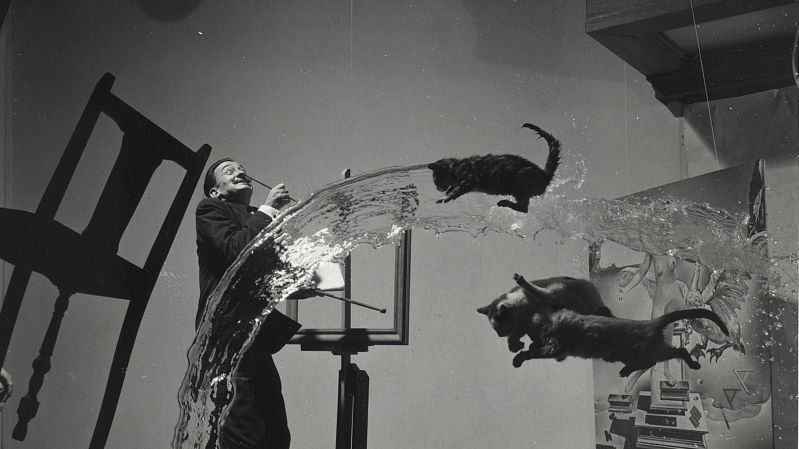
More provocative, though, is what turned up in the comments section at the end of Delgado and Reevy’s survey, in which pet owners of both types could remark on their animal of choice. Cat people rhapsodized about their cat’s individuality, writing things like “my cat is the smartest.” Dog owners, on the other hand, tended either to celebrate their pet’s obedience or make general statements about all dogs (e.g. “I love dogs” or “dogs are sweet!”), says Delgado.
The Facebook comment thread lends more proof to the cat part of that phenomenon. Dolly, Boris, Buddi, Cuddles, Snowy, Salem, Isis, George Hubert, and Noodle are among hundreds of other cats praised in sometimes TMI-levels of detail.
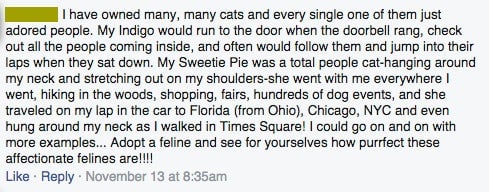





This makes sense. Cats’ independence, lack of transparency, and self-sufficiency means when people finally reach harmony with their kitty, they’ve overcome huge natural barriers to build a bond of mutual respect.
Why cats—and not dogs—won the internet
But it doesn’t seem that cat people alone admire this independence. It’s cats, not dogs, that have long since conquered the World Wide Web, inspiring the LOLCat craze and helping turn Buzzfeed into a media empire.
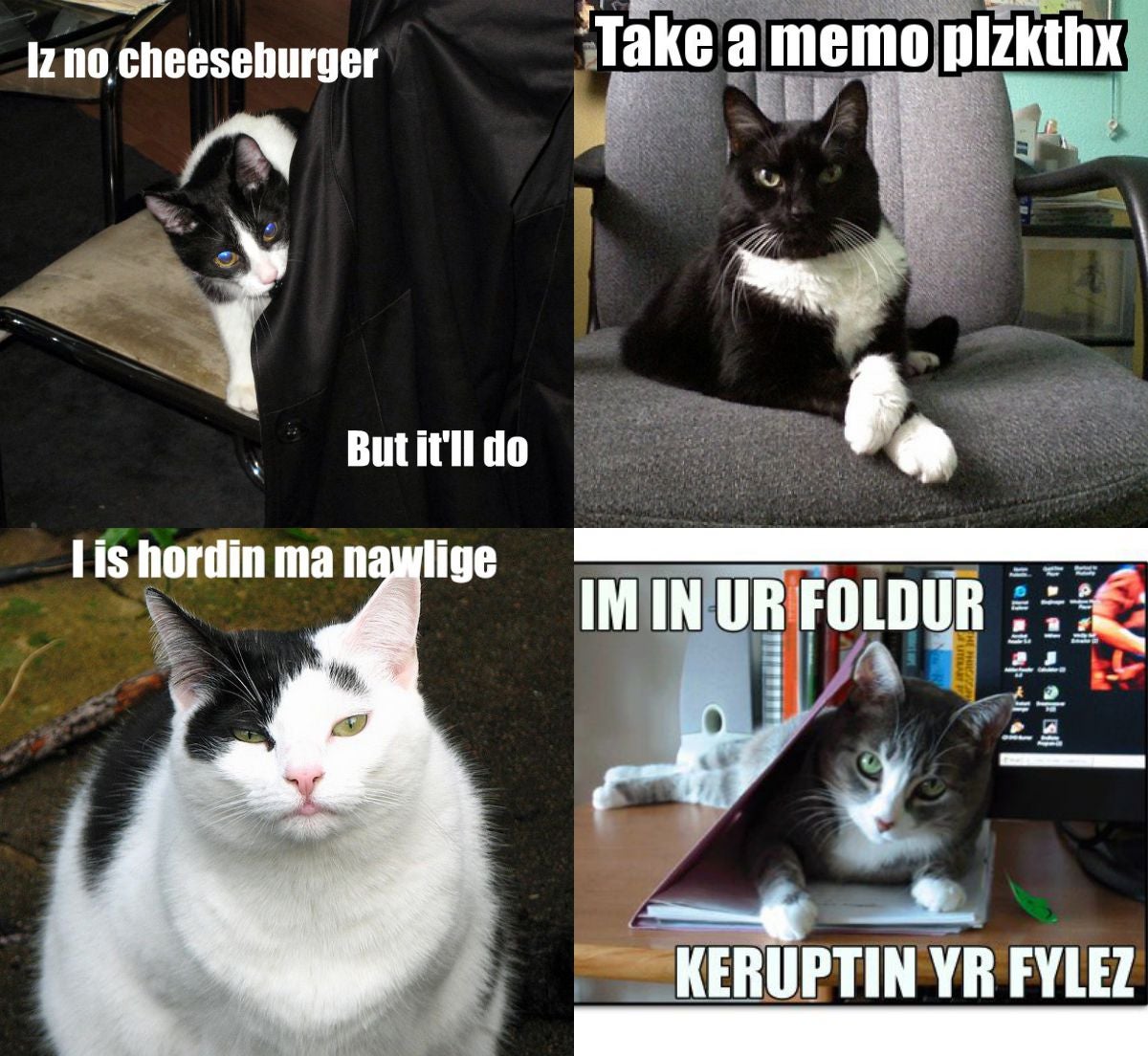
Clearly that viral sensation isn’t driven by pet-type allegiance; according to Gosling’s study, just 11.5% of respondents identified as cat people, while self-professed dog people make up nearly half.
It’s hard to say exactly why cats are so enduringly hilarious, but something about their attitude is clearly ripe for spoofing.
Dogs go viral too, of course. But the exceptions prove the rule. No one shares YouTubes of how obedient or friendly or guilty-looking they are; those are expected of them. They mainly go viral only when they’re doing something virtuoso, like warbling ”I love you.”

Dogs have to do something super-smart to attract attention. Cats, though, just have to be; the captions write themselves. The universal fun that seems to come from imagining a cat’s thoughts hints at a grudging respect for the fact that they appear to be thinking anything at all. Dog-shaming, by comparison, is a one-note joke playing on dopey dog naughtiness. Cats have a much richer range of ambitions and emotions for LOLCat-maker to exploit.
To put it another way, cats trounce dogs on the internet precisely because they are misunderstood—or, more accurately, because they’re so much harder than dogs to understand. We can pat ourself on the back for that. In breeding his own best friend, man made a creature inclined to listen to him more than to Nature. Cats haven’t let that happen, and yet they still choose to love people. You don’t have to be a cat person to respect them for it.
Feature image is by Flickr user cloudzilla. The image has been cropped and sharpened.